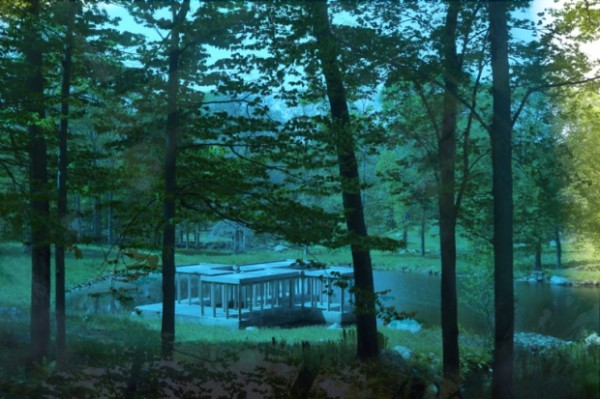James Welling
Friday, 1 February 2013
Work from Glass House. Welling has an incredible exhibition/retrospective opening tomorrow at the Cincinnati Art Museum.
“Taken over the course of three years (2006–2009), these photographs were made using a digital camera, and the resulting images capture the architectural features of Johnson’s 47-acre compound. In addition to the Glass House, Welling photographed the Brick Guest House (1949), the Lake Pavilion (1962), and the Lincoln Kirstein sculpture (1985) on the grounds of the estate. To achieve his luminous effects, the artist placed a variety of colored filters between lens and subject to introduce intense fields of color, transforming the image at the moment of exposure.
In this new body of large-scale inkjet prints, Welling continues to explore his longtime interest in color phenomena and trichromatic (RGB) vision, the process by which our eyes and brain work together to perceive the visible spectrum. Welling first examined these ideas in 2005 with his Hexachromes, images of succulents photographed through colored filters. Begun at the same time as these works, the Glass House images were produced using many of the same filter combinations and layering effects.
In a statement on Glass House, Welling elaborates on the physical and conceptual properties of his interventions:
“I’ve been using the word “filter” as a noun but it’s also a verb. A filter lets some wavelengths of light through and certain kinds of information to seep in. In addition to plastic, colored filters, I introduced clear glass, clear plastic, fogged plastic, pieces of glass that were slightly uneven and tinted, and finally a diffraction filter that breaks light into the spectrum.
Although the Glass House is symmetrical (the front is the same as the back), I prefer a frontal view because you can see through the house to the landscape directly west. This is the aspect of the house that is perhaps most fascinating to me. This big glass box, plunked down in the Connecticut landscape, seems like a conceptual sculpture, a gigantic lens in the landscape. When I realized I could make the glass red or add reflections to the face of this supposedly transparent house, my project became a laboratory for ideas about transparency, reflectivity, and color.”
James Welling is known for his peripatetic practice, using diverse strategies to produce works that are at times representational, at times abstract, and often, paradoxically, both. Displaying a productive disregard for the internal norms of photography, Welling harnesses the elemental components of the medium – light, color, and movement – to produce distinctly original work, while remaining keenly aware of photography’s history. His experimental approach, and especially his sensitivity to the physical and technical properties of his medium, \has influenced an entire generation of younger artists. Welling’s early abstract works implemented such simple materials as crumpled aluminum foil, draped velvet, pastry dough, and gelatin, while other works abandoned the camera altogether. Photograms made from strips of cut paper or flower blossoms appeared in his later work, as well as the artist’s experiments with layered exposures and filters, evidencing Welling’s ongoing interest in testing the capabilities of his apparatus. The Glass House works fuse the artist’s attraction to surface materiality with his interest in the visual experience of abstraction. The reflective, transparent façade of Johnson’s diaphanous structure knit light, interior, and exterior together to describe architectural space, allowing Welling’s layered photographs to inhabit multiple physical and chromatic dimensions. ” – David Zwirner



